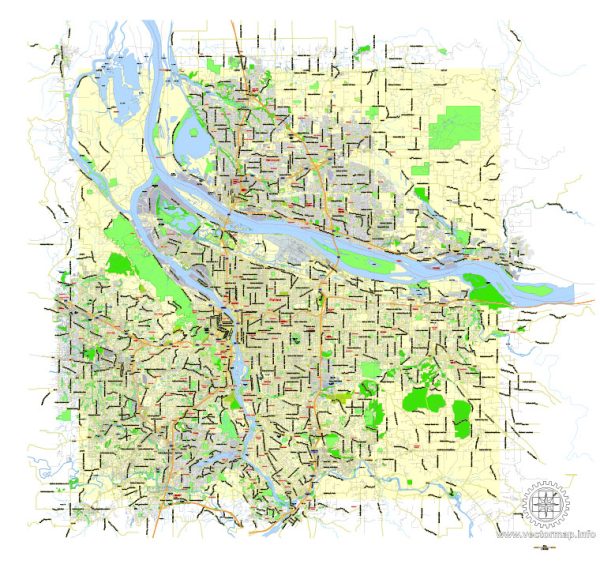The urban development history of Portland, Oregon, and Vancouver, Washington, reflects the broader trends and influences that have shaped cities in the Pacific Northwest. Both cities have experienced significant growth and change over the years, influenced by factors such as economic shifts, transportation developments, and social and cultural dynamics.
Portland, Oregon:
Early Settlement and Growth:
- Portland’s history dates back to the mid-19th century when it was founded in 1845. It quickly became a hub for pioneers and settlers due to its strategic location at the confluence of the Willamette and Columbia Rivers.
- The city’s growth was further accelerated by the Oregon Trail, which brought a wave of immigrants to the region.
Economic Expansion:
- Portland’s economy initially relied on timber and shipping. As the city grew, it became a major port and industrial center, exporting timber and other natural resources.
- The completion of the transcontinental railroad in the late 19th century boosted economic development, facilitating the movement of goods and people.
Transportation and Urban Planning:
- Portland’s urban development was influenced by transportation infrastructure. The construction of bridges and highways played a crucial role in connecting different parts of the city.
- The city is known for its early adoption of urban planning measures, including the establishment of a greenbelt system and a focus on public parks.
Post-War Era and Revitalization:
- Like many American cities, Portland experienced suburbanization in the post-World War II era. However, in the later decades of the 20th century, there was a renewed focus on downtown revitalization and sustainable urban development.
- The city gained a reputation for its emphasis on public transit, bike-friendly policies, and urban growth boundaries.
Vancouver, Washington:
Early History and Hudson’s Bay Company:
- Vancouver, Washington, has roots in the Hudson’s Bay Company’s Fort Vancouver, established in the early 19th century as a fur trading post.
- The city developed as a supply center for the company and later became an important military outpost.
Industrialization and Economic Shifts:
- Vancouver’s industrial growth, including the Kaiser Shipyards during World War II, contributed to the city’s economic development.
- The decline of traditional industries in the later years led to efforts to diversify the economy.
Suburbanization and Growth:
- Similar to Portland, Vancouver experienced suburbanization in the mid-20th century. The construction of highways facilitated this trend, connecting Vancouver to the broader metropolitan area.
- The city saw growth in residential areas, shopping centers, and educational institutions.
Contemporary Developments:
- In recent years, both Portland and Vancouver have experienced urban renewal and a focus on sustainable development.
- There has been an emphasis on mixed-use developments, public spaces, and transportation projects to enhance connectivity between the two cities.
Overall, the urban development history of Portland, Oregon, and Vancouver, Washington, reflects the evolution of cities in the Pacific Northwest, from early settlement and industrialization to contemporary efforts toward sustainability and community planning.


 Author: Kirill Shrayber, Ph.D.
Author: Kirill Shrayber, Ph.D.